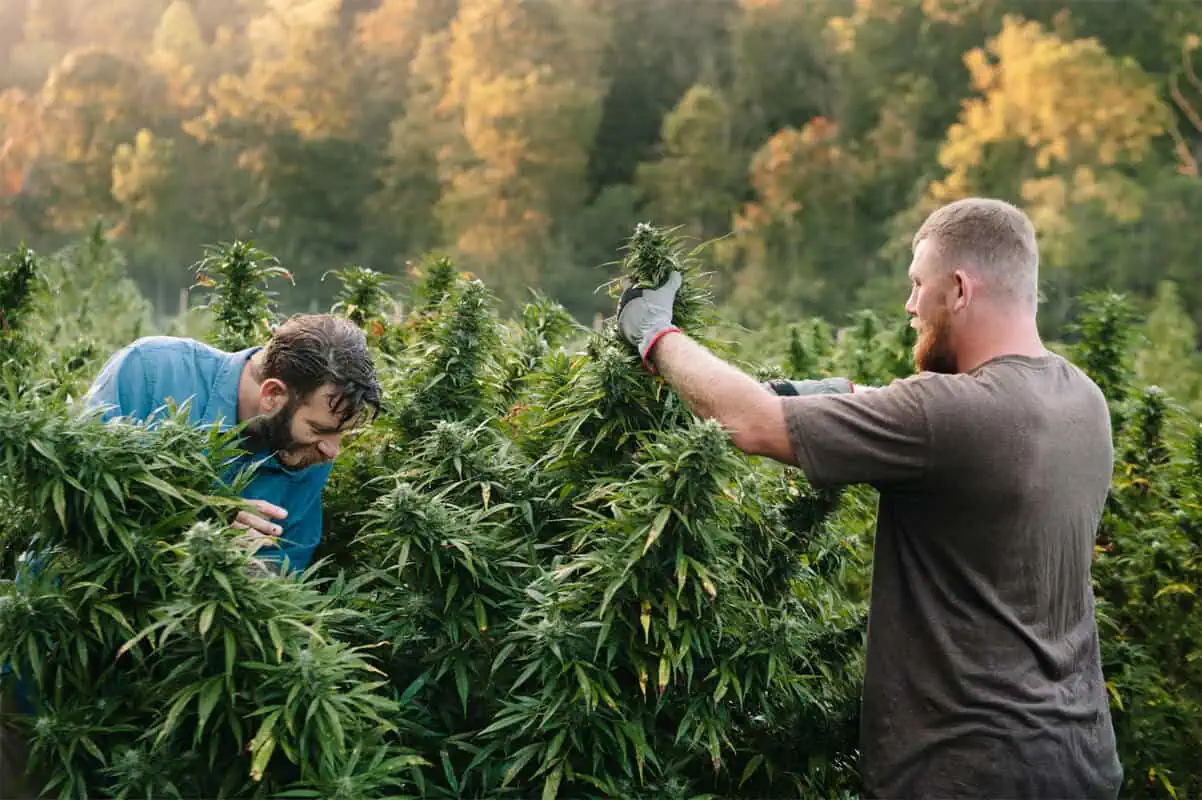TABLE OF CONTENTS
What is cannabis propagation? Propagation refers to the creation of new plants. There are two main ways to propagate cannabis plants: sexually and asexually.
Sexual propagation occurs when a female cannabis plant is pollinated by a male resulting in a seed containing the genetics of both parents. Asexual propagation happens when you take a cutting from a “mother plant” and create a new genetically-identical plant from it.
Each method of propagation has its own advantages and disadvantages.
Sexual Cannabis Propagation
Sexual propagation refers to the process where the male plant’s pollen fertilizes the female plant's egg to produce a seed. The seed is composed of its outer seed coating, which protects the endosperm and embryo inside. When placed in the right growing medium with enough water the seed can germinate and be ready for transplanting.
Benefits
- A fast and affordable method to grow cannabis
- Can result in new strains and stronger hybrids
- Reduces the risk of spreading disease
- Maintains genetic variation allowing plants to adapt to the environment
Pollination
As a new cannabis grower, sexual propagation can be tricky. It requires that you pollinate female cannabis plants using a male. This requires you to create an environment with only female plants that you intend to pollinate. Keeping flowering female plants nearby can increase the risk of cross-pollination and affect your yield
Here's how you can pollinate your plants at home:
- As always, sanitize your tools including your small paintbrush, growing environment, and pollen container for the collection of cannabis pollen.
- At the start of the flowering stage, male plants will grow pollen sacs that gradually open and release pollen. Keep your male plants away from your females to prevent pollinating plants you don't want to breed.
- Using a small paint brush, collect the pollen from the sacs and place the pollen into a glass jar or plastic bag. Ideally, your container should be airtight to reduce changes in humidity. Store it in a dark and cold space.
- When female plants are in their flowering stage and the flowers form their hair-like stigma, they are ready to be pollinated. Using your paintbrush, place the pollen on your chosen flower sites over each stigma.
- To prevent cross-pollination, you can secure the bud site with a sanitized plastic bag and tie it off.
- Repeat the process up to three times during a period of two weeks.
Over time, the plants will produce seeds that you can use to grow plants. Planting from seeds is a reliable method to produce healthy cannabis plants. Here's the process of germinating a seed:
- Start off with a high-quality cannabis seed purchased from a reliable supplier. Consider the size, color, and texture of the seed to determine its quality. Ideally, choose a seed that can thrive in your chosen environment.
- The germination process helps your seed begin sprouting. Most growers germinate seeds using the paper towel method to jumpstart their germination. Seeds need to absorb enough water to germinate. That's why growers place their seeds between two moist paper towels and cover them with paper plates to prevent drying and protect seeds from external stressors.
- Check seeds everyday for germination. When germinated, the seeds’ tiny leaves break out of their shell.
- Once germinated, place the seedlings in an appropriate growing medium including a starter cube to begin the vegetative stage.
Asexual Cannabis Propagation
Asexual propagation, also known as cannabis cloning, is an excellent method to reproduce a specific species of plant. One of the most popular ways of cloning a cannabis plant involves removing a cutting from a vegetative mother plant and rooting it in another medium. Essentially, the cutting regenerates itself forming a new plant.
Benefits
- Can be faster and easier way to propagate since you skip the germination phase
- Can be the only way to reproduce genetics from a particular strain
- Guarantees the production of female plant
- Ensures consistency in quality exactly like the mother plant
Cloning
Cloning a cannabis mother plant is easier than it sounds. Here's a quick guide on the process of cloning a plant:
- Sanitize your shears, scissors, or other cutting tools in a mixture of rubbing alcohol and bleach. This reduces the risk of spreading any diseases across your crop.
- Choose the right type of mother plant you want to reproduce. Make sure it's healthy and in its vegetative stage.
- Cut a shoot below its node using sterile cutting tools at a 45-degree angle. Cuttings can be up to 8 inches long.
- Immediately transfer the cutting to a container of water. This helps prevent the formation of air bubbles inside the cutting.
- If needed, prune the extra foliage to allow your clone to focus on growing its roots.
- Make small diagonal cuts on the exposed and raw part of the cutting to facilitate rooting. If necessary, dip your exposed end in a rooting hormone.
- Place your prepared cutting in a medium of your choice (soil, water, stater cube).
- After about 3-5 weeks, transplant your clone to a larger growing container.
Micropropagation
A newer form of propagation, known as micropropagation, is taking the cannabis industry by storm. Using plant tissue culture, a smaller and more precise sample from the mother plant is placed in a sterile environment containing media with nutrients and vitamins to promote root growth. Micropropagation allows you to propagate a large number of plants free from disease. However, this method of propagation is in its infancy stages and reserved for lab environments.
“
There are over 300,000 jobs in the cannabis industry. CTU trained me for one of them!

Makes $24.50 @ THC +
Learn How to Propagate at Cannabis Training University
Ready to start your propagation journey? Cannabis Training University’s online cannabis certification program can teach you the fundamentals of propagation. Regardless of your skill level, learn how to plant to seed or take a cutting and grow a healthy plant. Learn from master growers in the industry how to grow on a budget and avoid common problems faced by beginner gardeners. Beat the learning curve with CTU.

Luis Cordova
Luis Cordova is a distinguished author, and renowned expert in cannabis cultivation, who possesses a Master's degree in Plant Biotechnology and Pharmaceutical Science. As a valued contributor to highly esteemed publications such as Cannabis Training University and Maximum Yield Magazine, Luis has emerged as a trusted source of guidance and knowledge in the cannabis industry. Having written thousands of informative articles, Luis is widely recognized for his comprehensive expertise on cultivating cannabis, both indoors and outdoors.












 Jeff was involved in an accident where he endured a traumatic brain injury. He had a week-long stay in ICU where brain surgeons
Jeff was involved in an accident where he endured a traumatic brain injury. He had a week-long stay in ICU where brain surgeons  100% risk free money back guarantee within 48 hours after purchase if student has not completed any of the courses or exams.
100% risk free money back guarantee within 48 hours after purchase if student has not completed any of the courses or exams.